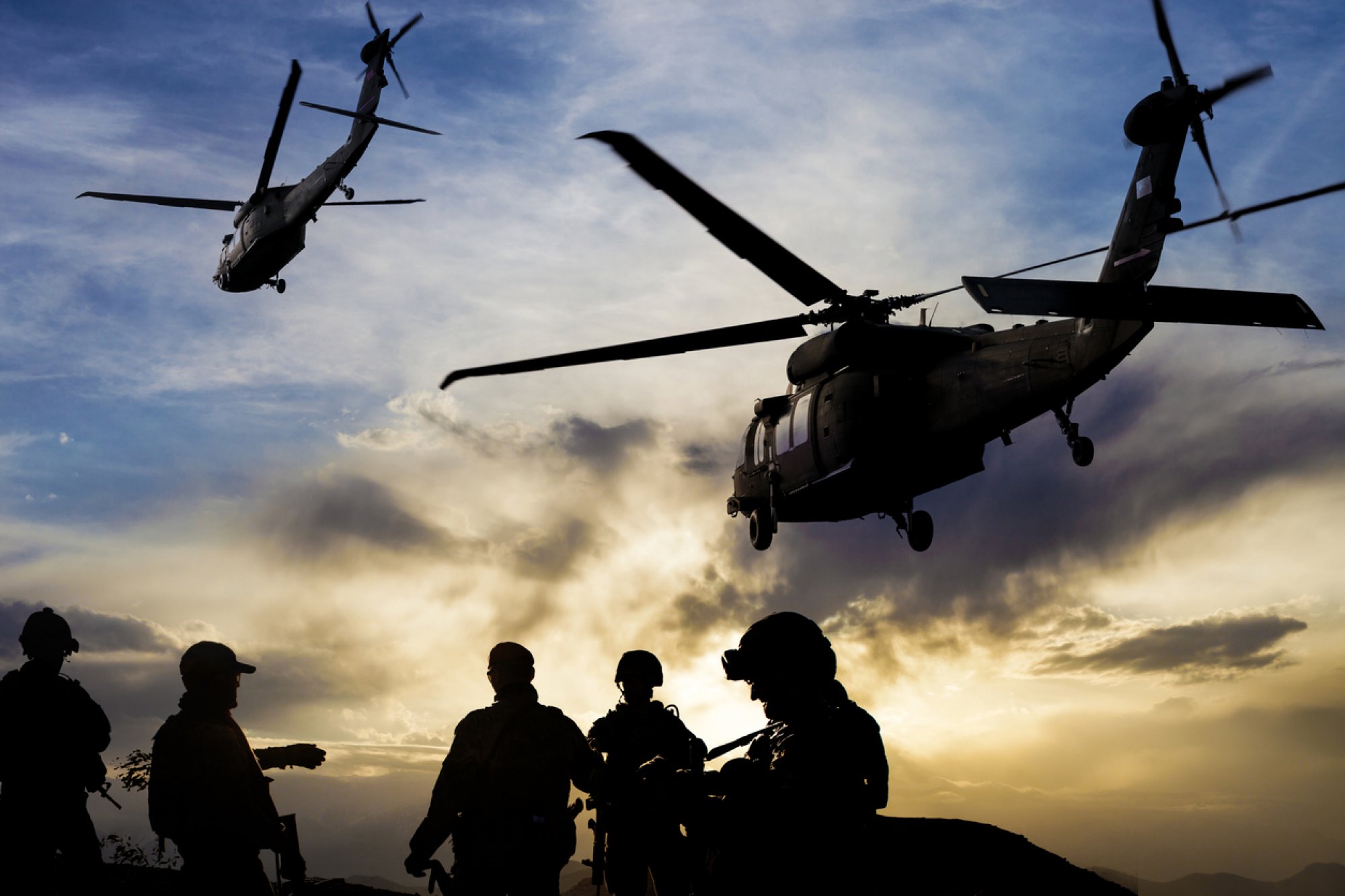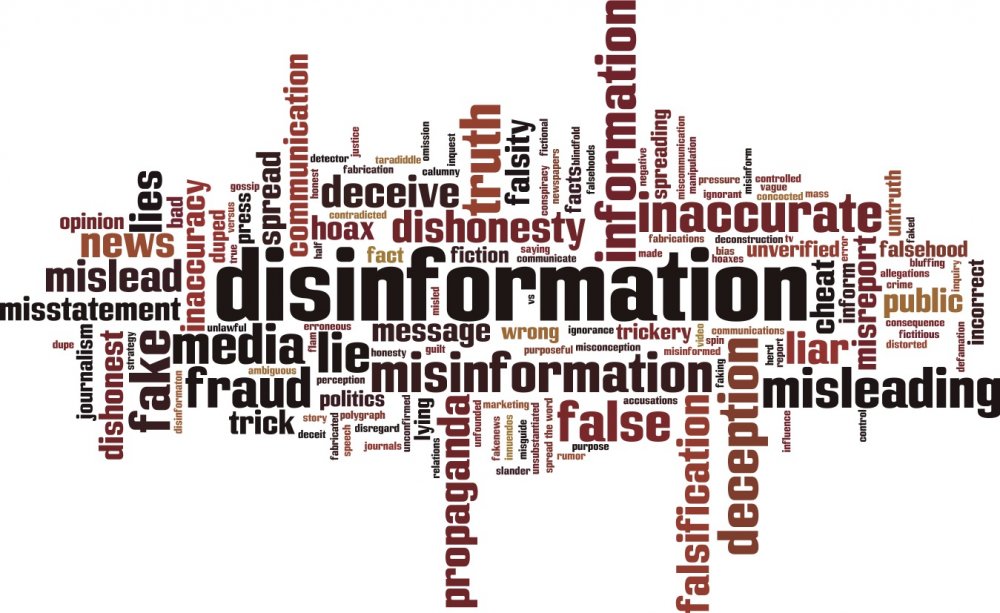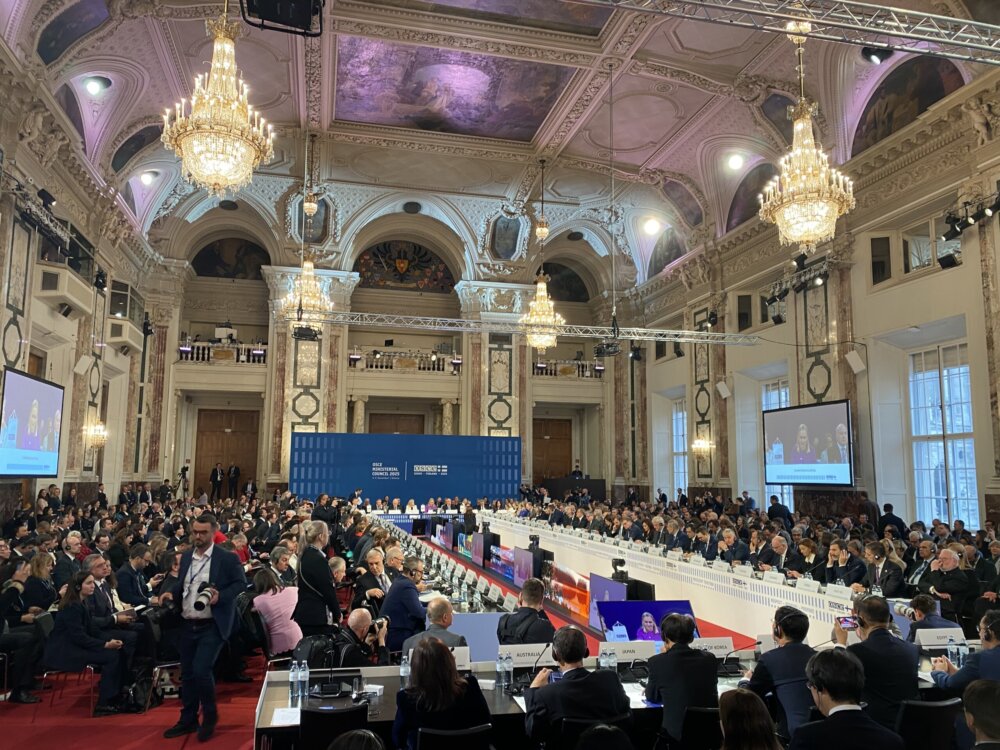guvendemir/iStockphoto

Under Pressure: The Uncertain Future of the OSCE Structured Dialogue
The “Structured Dialogue”, launched in the OSCE at the Hamburg Ministerial Council in December 2016, has been one of the few positive and dynamic elements of finding a way “back to diplomacy” to de-escalate the current confrontation between Russia and the West. Yet, the future of the Strategic Dialogue in 2019 and beyond is currently contested among OSCE participating States.
Introduction
Until very recently, the OSCE Structured Dialogue (SD) on confidence-building, risk reduction, and arms control has been widely praised among practitioners and experts. For OSCE Secretary General Thomas Greminger, the SD is the organization’s “flagship dialogue initiative”. Policy analyst Ulrich Kühn hopes that the SD can become “the ideal forum for exploring early CSBMs and, in particular, risk-reduction measures”.
At the moment, the SD is the only multilateral and inclusive forum for discussing politico-military challenges in Europe with Russia. NATO’s rhetoric of the “spirit of Harmel” (defense cum détente) is currently not really met with deeds. In fact, the OSCE has mostly absorbed the second “Harmel pillar” of sustaining dialogue with Russia in difficult times. In 1967, the Harmel report emphasized that “the way to peace and stability in Europe rests in particular on the use of the Alliance constructively in the interest of détente”.
In this spirit, German Foreign Minister Frank-Walter Steinmeier launched a new conventional arms control (CAC) initiative in August 2016. Against all odds, the so-called “Steinmeier Initiative” led to the “Hamburg mandate” in December 2016 to launch a Structured Dialogue to try to de-escalate tensions and to find common ground on which to build trust and confidence.
However, it seems far from certain that the SD will indeed become a success story of the OSCE. Apparently, it is currently not sure whether the SD will be continued in its current form in 2019 and beyond. Supporters of a relaunch of CAC such as Germany, Belgium, and the Netherlands seem ready to take the lead in 2019 to preserve the dialogue format.
The Steinmeier initiative: breaking the impasse
In retrospect, it is surprising how swiftly Steinmeier’s initiative was transformed into the launching of the SD a few months later. Early reactions were rather skeptical. Having been neither consulted nor informed about the initiative in advance, the US felt that the proposal was “a misplaced reward for Russian bad behavior” (p. 2). For the US, there was “simply no basis for initiating negotiations on a new arms control agreement while blatant violations of existing arrangements remain.” In Washington’s view, there could be no new agreements as long as Russia was unwilling to restore the status ante quo in Crimea and in the Donbas region. Russia welcomed Steinmeier’s initiative but first wanted to wait for reactions of Germany’s allies, being well aware of Washington’s negative reaction and different opinions within NATO.
Immediately, however, Steinmeier’s idea was picked up by a so-called “liked-minded Group of States of Conventional Arms Control in Europe” (“the Group”). On 25 November 2016, 14 countries published a “Berlin Declaration” in support of a relaunch of CAC in Europe. The fact that EU heavy-weights and prominent NATO members like France and Italy signed the Berlin Declaration was very important to maintain momentum. Their call (including 9 NATO members) for a revival of CAC in Europe made it more difficult for “NATO hardliners” (US, UK, Poland, Baltic States) to disregard Steinmeier’s initiative. Its moral support was essential to keep the topic on the OSCE agenda and to push OSCE foreign ministers in Hamburg to adopt a Declaration.
The “Hamburg Declaration” gave the Austrian 2017 OSCE Chairmanship a political mandate to moderate an informal dialogue on CAC. The US and Russia went along – even if with limited enthusiasm, as their reservations in interpretative statements to the Hamburg Declaration evidenced. Apparently, Berlin gave hand to a compromise with Washington, by accepting that CAC would only be discussed in a later stage and that the SD would first focus on other topics including diverging threat perceptions. The US government wanted to avoid the blame for killing a German initiative that was supported by most other European countries. In retrospect, Germany’s idea to form the Group to multilateralize its initiative was a clever move for anchoring its initiative within the OSCE.
Four clusters of threats
On 17 March 2017, a kick-off event for the SD took place at ambassadorial level. In 2017-18, seven SD meetings took place with Vienna-based ambassadors and senior officials from capitals across the OSCE.[1] They focused on diverging threat perceptions, the erosion of the rules-based security order in Europe, military doctrines and force postures, military-to-military contacts, risk reduction, combating international terrorism, security concerns related to modern warfare, hybrid warfare, and a detailed mapping of trends in military force postures and military exercises over a longer time period.[2]
In April 2017, a French delegate suggested to group all threats into four clusters: 1) Challenges to a rule-based European Security order; 2) transnational threats (terrorism, migration); 3) Interstate tension of a politico-military nature; 4) hybrid threats (cyber, fake news). The 2017 meetings under German chairmanship focused on clusters one and three and thus preferred a narrow focus on politico-military threats rather than broader threats including transnational threats such as terrorism, migration, or cyber risks.
In 2018, the SD was widened for discussing terrorism and hybrid threats, as long desired by the US, Canada, or Turkey. While the Belgium chair also favors a narrow focus, Belgian OSCE Ambassador Paul Huynen decided to selectively also discuss clusters two and four, in order to keep all countries on board without watering down the essence. That the SD cannot always be operated in isolation of interfering confrontational world events, was evidenced when the opening session in April 2018 was negatively impacted and dominated by a verbal exchange about the recent US retaliatory military attacks in Syria.
Four main challenges
After a good start, it seems that the SD initiative might be slowly losing speed due to four factors.
Firstly, a “two camp” mentality emerged also within the SD, not surprisingly replicating a larger splitting of the OSCE in two sides. On the one hand, states like Germany, France, Switzerland, Austria, and Belgium would like to use the SD as a confidence- and trust-building process leading in the long-term to a revitalization of CAC in Europe.
Thus, this group would like to keep the SD’s focus relatively narrow on politico-military threats (clusters one and three). On the other hand, countries like the US, UK, Canada, Norway, Turkey, Poland, the Baltic States, or Romania remain very skeptical. They prefer a broader approach and would like to discuss transnational threats (terrorism, migration) as well within the SD – or they regard the SD or CAC as a disturbance, for different reasons.
Thus, there is still uncertainty about the agenda and the main goal of the SD. As a result, expectations about the SD vary as well. Is the initiative just an exercise in damage control, or should it prepare the ground for a new generation of CAC, a follow-up treaty to the moribund CFE Treaty?
Secondly, the German initiative has failed to find the support of the two most important CAC players – the US and Russia. While it has been a major success for Berlin that its initiative has found the support of 21 like-minded European states, no progress, not even small steps, is possible without Washington and Moscow. For the US, no progress on CAC is conceivable as long as Russia is unwilling to return to a rules-based security order. This hardline view is supported within the OSCE by the UK, Canada, Poland, Romania, and the Baltic States.
In addition, the US had expected that the Group would be dissolved with the establishment of the SD, as “the US now seems to consider the Group of Like-Minded Countries as an irritant, unnecessarily complicating an already crowded field of discussion platforms and institutions” (p. 2). Yet, the Group continued to exist and met ten times in 2017-18, trying to provide input for the SD.[3]
Russia, on the other hand, has made clear that it wants a new European security order, as the old order in Moscow’s view has been rigged towards Western organizations. Moscow wants to avoid the impression of being a demandeur in CAC, but has interest in the topic, even from a restrained position.
Thirdly, OSCE participating States are split in their assessment on the utility of a political linkage between the resolution of the Ukraine crisis and progress on arms control. Germany, Switzerland, and Austria (the states that led the OSCE in 2014, 2016, and 2017, respectively) aim at reducing tensions between Russia and the West through CAC and CSBM discussions and try to avoid political linkages with unresolved conflicts including Ukraine.
Four years after the outbreak of war in Ukraine, however, a majority of states feel that the political climate is not yet ripe for CAC. At the moment, it is only possible to prepare for better times in the future and to develop new concepts and solutions that may be implemented at a later stage.
Fourthly, the SD is clearly led by foreign ministries. In many OSCE participant States, it is far from clear whether the SD, even if supported by the foreign ministry as part of their support for dialogue and détente with Russia, is also viewed positively by ministries of defense and the armed forces. This seems not even to be entirely clear in the case of Germany, the staunchest supporter and initiator of the SD. In September 2018, the Belgian Chair sent detailed questions to be considered in advance of the SD meeting, which encouraged prior consultation between foreign and defense ministries.
Small steps forward
Currently, it is not yet entirely clear whether the SD will be continued in its current form in 2019 and beyond. Apparently, some OSCE participating States would rather like to discuss the SD’s topics in regular, formal FSC meetings or to further broaden the focus of the SD. The unresolved Ukraine crisis remains a stumbling block for real progress, even if so far the SD could be conducted in an atmosphere less negatively impacted by the fallout of the Ukraine crisis than in other OSCE forums.
At the same time, lessons learnt from the Cold War imply that arms control is possible even during confrontational times, as long as there exists an overarching common interest to avoid open war. As argued elsewhere, dialogue among antagonists does not equal appeasement, but rather is a prerequisite for building trust. Direct communication is important for de-escalation. Thus, the discussions in the SD must be regarded as a reward for Germany’s bold initiative of August 2016. Frank-Walter Steinmeier demonstrated rare political leadership. In the future, political initiatives to avoid the steady escalation and hardening of positions and to reverse the unfortunate remilitarization of European Security since 2014 are also needed to originate from Washington and Moscow.
The SD is a good example for the fact that the OSCE currently remains the best place for inclusive multilateral discussions of today’s politico-military challenges. It provides for direct military-to-military contacts – a confidence-building measure in itself. New ideas are best generated in small, informal settings. As long as the FSC seems to be politicized because of the Ukraine crisis, the Group of 22 Likeminded Countries has the potential to lead the way, if countries such as Poland or Latvia that are highly suspicious of Russia’s geostrategic aims, are really committed to arms control rather than serving as “NATO watchdogs” within the Group.
The SD is currently one of the “small steps” and one of the “cooperative island” which have been recommended elsewhere since early 2016 to overcome the downward sliding towards a second Cold War and to return towards a constructive dialogue with Russia.[4] The SD mapping exercise in particular has the potential to contribute to the establishment of commonly agreed facts for further, more substantive discussions. Once trust has been established in the informal and confidential setting of the SD, next small steps could include much needed risk-reduction measures, status-neutral CSBMs in disputed areas, and measures including voluntary political declarations to prevent a new arms race – and SD groundwork ideas could then be forwarded to more formal institutions where politically and/or legally binding CAC commitments can be agreed upon.
For the moment, even such small steps seem like a distant dream. In the next few weeks, Italy and Slovakia will need all of their diplomatic talent to find a way to shape consensus with the OSCE to continue the SD in its present form in 2019 – possibly under (continued) Belgium, Dutch, or (again) German chairmanship of the Informal Working Group.
Dr. Christian Nünlist is Senior Researcher at the Center for Security Studies (CSS) at ETH Zürich and a Co-Coordinator of the OSCE Network of Think Tanks and Academic Institutions. He is the author of, amongst others, “Reviving Dialogue and Trust in the OSCE in 2018” (2017) and co-author of “The Road to the Charter of Paris: Historical Narratives and Lessons for the OSCE Today”.
This article is based on a longer paper prepared for and presented at the OSCE Focus 2018 conference, held in Geneva on 12-13 October 2018. The conference was organized by the Geneva Centre for the Democratic Control of Armed Forces (DCAF) with support from, and in close collaboration with, the ministries of foreign affairs of Austria, Italy, Slovakia, and Switzerland, as well as the Center for Security Studies (CSS), ETH Zurich.
[1]The SD meetings took place on 7 April, 6 June, 5 September, 10 October 2017 (chaired by German Ambassador Eberhard Pohl); and on16 April, 19-21 September, and 25 October 2018 (chaired by Belgian Ambassador Paul Huynen).
[2]It was kicked-off at a workshop within the format of the SD on 8-10 November 2017 in Vienna and with a detailed analysis of force postures and military exercises. A second mapping workshop followed on 3-4 May 2018 in Vienna. A third mapping meeting was integrated into the sixth SD in September 2018.
[3]The Group regularly met since September 2016, namely on 16 September 2016, 4 October 2016, 25 November 2016, 27 January 2017, 7 April 2017, 9 May 2017, 29 September 2017, 19 January 2018, 25 April 2018, 5 October 2018.
[4]In the policy brief „Trust and Realpolitik: The OSCE in 2016“, Petri Hakkarainen and I argued that the German 2016 OSCE Chairmanship should focus on „small, concrete steps to begin improving the confrontational atmosphere and to create mutual trust“ and suggested five areas to create these „cooperative islands“ (p. 4). For a similar use of „small steps“ and „islands of cooperation“, see Reinhard Krumm et al., „For a Balanced Peace: Five Steps Out of the Security Deadlock in (Eastern) Europe“, in: FES Perspective(2017), p. 1, 4; Reinhard Krumm, „Small Steps: How to Start Improving Security in Europe“, in: Samuel Charap et al. (eds.), Getting Out from „In-Between“: Perspectives on the Regional Order in Post-Soviet Europe and Eurasia (Santa Monica, CA: RAND, 2018).



Comments
* Your email address will not be published